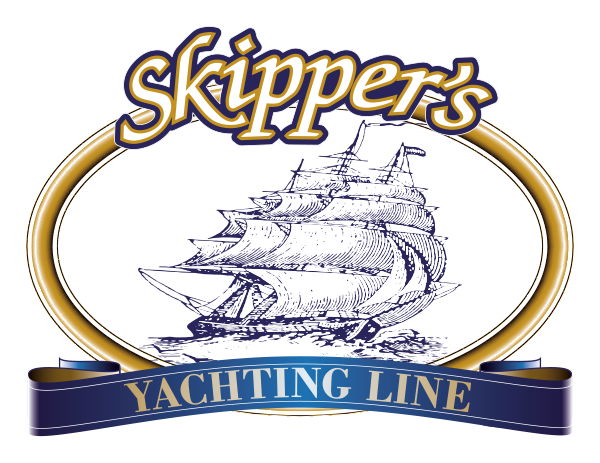

Polyurethane-acrylic enamel of the highest quality and exceptional expansion, absolutely non-yellowing. It offers excellent gloss retention and color inalterability. It is used as a fine finish on boats. Its application allows a full and bright finish both by spray and by brush. Applied on EPOFOND AM-9 epoxy primer, it offers resistance to the marine environment of extreme durability and effectiveness. Available in different colors.
SURFACE PREPARATION AND APPLICATION PROCEDURE
Bare Steel. Onto sandblasted steel according to SA 2,5 apply one coat of EPOFOND M-9. If sandblasting would not be possible degrease the surface and remove any trace of corrosion providing a suitable anchor pattern. Any loose paint sjhould be mechanically removed. Apply 2 coats of EPOFOND AM-9 primer and let dry. Fill up if necessari with PLAMUR FINISHER MDF. Apply then one coat of POLIFOND primer, let dry for 24 hours and sandpaper. Overcoat with 2 coats of ACRIGLASS ENAMEL allowing 24 hours between coats.
Fibreglass. The surface to be coated should be degreased with suitable cleaner, rinsed and slightly sanded with fine abrasive paper. Remove dust and clean the surface. If the surface is slightly powdering it is necessary to sandpaper and apply one coat of POLIFIBER PRIMER allowing 18-24 hours between coats. Fill up if necessary with PLAMUR FINISHER MDF. Overcoat with 2 coats of ACRIGLASS ENAMEL allowing 24 hours between coats.
Bare Wood. The surface should be clean, dry and well seasoned. If required apply a sealing coat of POLIGLASS VARNISH diluted 50-75% or more with THINNER 203. After 24 hours sandpaper and apply 2 coats of ACRIGLASS ENAMEL allowing 24 hours between coats.
Previously Painted Wood. Proceed with a patch test on a small area of the coated surface to verify if the old paint is compatible and to make sure that the old coating is still in sound condition. If the old coating is in good conditions and of polyurethane nature, apply then one coat of POLIFOND and let dry for 12-24 hours. Sandpaper and overcoat with 2 coats of ACRIGLASS ENAMEL in the desired shade.
In the case of loose or powdery paint or if not compatible it is recommended that the old paint should be removed completely down to bare wood and that application directions as described above for bare wood be followed.
| Paint Type | Two components |
| Binder type A | Polyester acrylic |
| Binder type B | Aliphatic Isocyanate |
| Code & colour B | 8ZALDI Sol.B |
| Specific gravity kg/lt (±0,05) | (A) 1,100-1.380 /(B) 1.025 |
| Solids content (volume) ±2 | 49% |
| Viscosity Ford ø 8 at 20°C ±2 | ø4 20°C:120-180 sec.(A+B) |
| Shelf life +23°C (±2) | 24 months in unopened cans |
| Viscosity Ford (Ø4 a 20°C) | 120-180 sec. (A+B) |
| Application | Brush-Roller-Spray |
| Mixing ratio A+B by volume | 2 parts Sol.A with 1 part Sol.B |
| Pot life A+B (20°C) | use within 6-8 hours |
| Brush-Roller | 15-25% Dilatant 205 up to 27-28 ° C over Dilatant 201 |
| Spray | 20-35% Thinner 203 |
| Dust dry | 1-2 hours |
| Recoat time | 24 h (20°c) |
| Application temperature | Between +10 C and +40 C |
| Relevant humidity | Less than 80% |
| Dry film thickness advised | 40 microns per coat |
| Theoret. coverage m2/Lt | 10 |
Colors: Bianco
Color code: 2W0000
Colors: AZZURRO
Color code: 2WA121
Colors: BLU MARINO
Color code: 2WA142
Colors: BLU OCEANO
Color code: 2WA122
Colors: GIALLO CROMO
Color code: 2WA110
Colors: GRIGIO CHIARO
Color code: 2WA116
Colors: NERO
Color code: 2WA070
Colors: ROSSO VIVO
Color code: 2WA113
Colors: VERDE SMERALDO
Color code: 2WA126
Before starting paint application please carefully read all the safety precautions indicated on the label of each can or in the product safety data sheet available on request. For further information please do not hesitate to contact our technical staff.
The above information is given to the best of our current knowledge, however, because the conditions of use of our products are beyond our control, no warranty is given or to be implied in respect of such information. Our technical staff can be contacted to study customer's specific requirements involving our products in order to enable their most effective use. Dilution rates and drying times must be considered only indicative, mainly related to a temperature of 20 ° C (68°F) and may vary according to prevailing temperature, in presence of particular weather conditions or depending on application procedures.